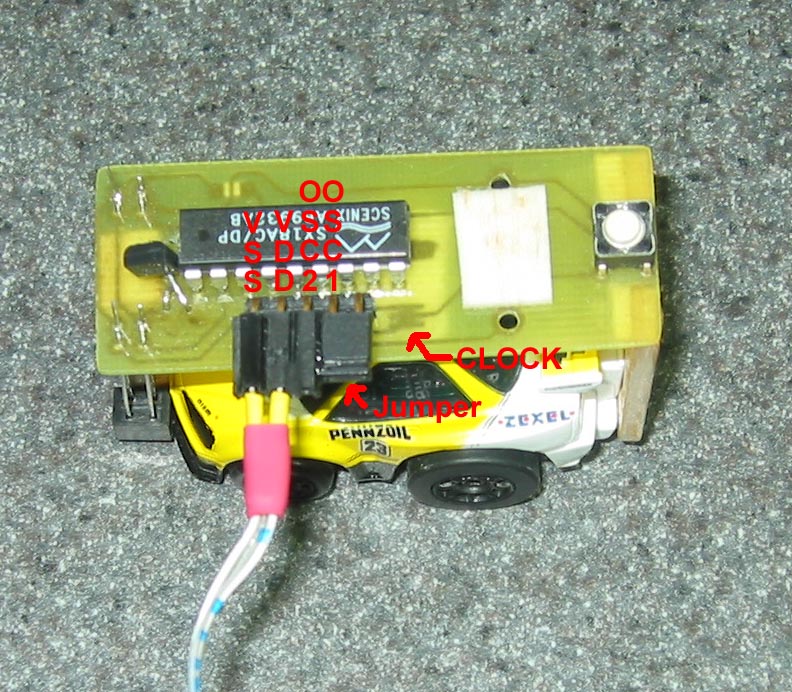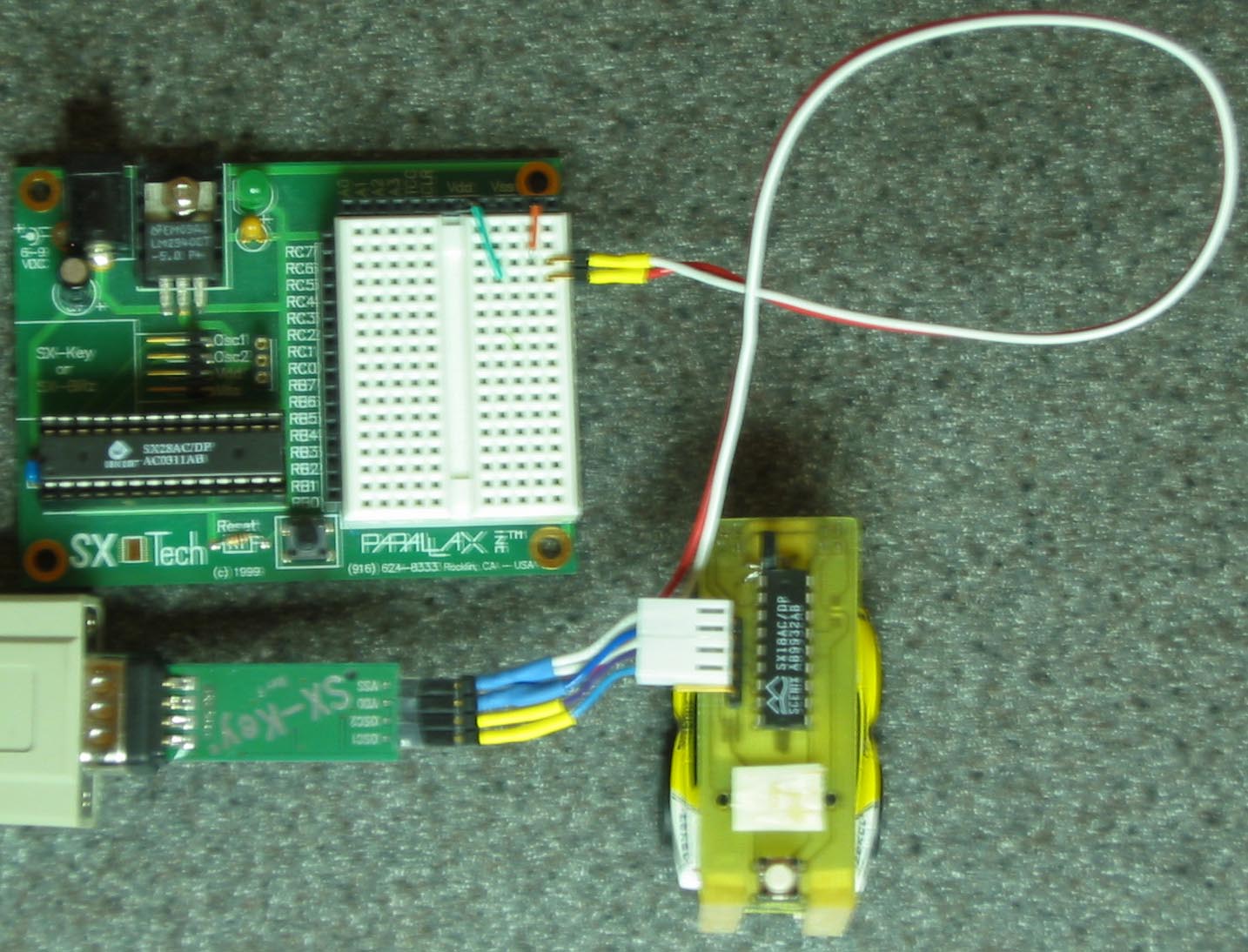Seeking Power and Programming Ideas
Hi All,
I'm currently working on making a Digi-Q IR controlled car become a line-following robot. For this, I wanted to be able to easily re-program the chip between successive attempts on the test track. This brought up two issues. Firstly, I need to switch between the on-board smt resonator (clock) and the SX-Key. Secondly, when autonomous, it runs off of a Lithium Ion coin cell (3.6V) that I don’t want to be used for powering the SX-Key (particularly during the programming).
I’m looking for different ideas for solving this same problem.
For my prototype, I’ve done the following:
Resonator vs. SX-Key – Rather than adding a separate header on which a jumper can disable the resonator, I added an extra pin to the standard SX-Key header. It was convenient that the last pin on the header is the OSC2 pin that gets driven by the resonator or the SX key. One advantage to this approach is that I can’t insert the SX-Key when the Jumper is in place for the resonator.
Power – Rather than adding an additional header to the board for external power, I created a very short cable that connects the SX-Key to the header that has power wires spliced in (see pictures below)
BTW – the original cable I created had much longer wires between the SX-Key and the connector to the header. However, when I tried to have the SX-Key drive the frequency, it would not work at the 48Mhz I required. Would I have been able to have it longer if I used Cat-5? Or just twisted the wires? Dunno - once I had something that worked, I stopped dinking with it.
This worked pretty well, except for the fact that I kept forgetting to put the Jumper back on. To solve this, I created a power cord for the battery that not only had the two pins for the power, but also glued on a jump. This way, I just unplug the SX-Key/Power cable and plug in the battery power/jumper.
Other ideas?
Jim
I'm currently working on making a Digi-Q IR controlled car become a line-following robot. For this, I wanted to be able to easily re-program the chip between successive attempts on the test track. This brought up two issues. Firstly, I need to switch between the on-board smt resonator (clock) and the SX-Key. Secondly, when autonomous, it runs off of a Lithium Ion coin cell (3.6V) that I don’t want to be used for powering the SX-Key (particularly during the programming).
I’m looking for different ideas for solving this same problem.
For my prototype, I’ve done the following:
Resonator vs. SX-Key – Rather than adding a separate header on which a jumper can disable the resonator, I added an extra pin to the standard SX-Key header. It was convenient that the last pin on the header is the OSC2 pin that gets driven by the resonator or the SX key. One advantage to this approach is that I can’t insert the SX-Key when the Jumper is in place for the resonator.
Power – Rather than adding an additional header to the board for external power, I created a very short cable that connects the SX-Key to the header that has power wires spliced in (see pictures below)
BTW – the original cable I created had much longer wires between the SX-Key and the connector to the header. However, when I tried to have the SX-Key drive the frequency, it would not work at the 48Mhz I required. Would I have been able to have it longer if I used Cat-5? Or just twisted the wires? Dunno - once I had something that worked, I stopped dinking with it.
This worked pretty well, except for the fact that I kept forgetting to put the Jumper back on. To solve this, I created a power cord for the battery that not only had the two pins for the power, but also glued on a jump. This way, I just unplug the SX-Key/Power cable and plug in the battery power/jumper.
Other ideas?
Jim




Comments